Kilmarnock, East Ayrshire, Scotland, UK 作者: 来源: 发布时间:2021-07-28
I. Population and Area
Continent: Europe
Country: The U.K
State/Province: Scotland
City/Town: Kilmarnock, East Ayrshire
Total Area: 10.54 (sq mi)
Population in 2018: 46.5 (thousand)
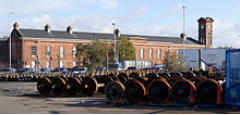
Reference Website:
https://www.google.com.hk/search?newwindow=1&safe=strict&ei=t5RkX6WtKdjr-QaomYCABQ&q=total+area+of++Kilmarnock%2C+East+Ayrshire&oq=total+area+of++Kilmarnock%2C+East+Ayrshire&gs_lcp=CgZwc3ktYWIQA1Dkg2lY5INpYPOLaWgAcAB4AIAB2geIAeMLkgEFNS0xLjGYAQCgAQKgAQGqAQdnd3Mtd2l6wAEB&sclient=psy-ab&ved=0ahUKEwjl5P7xx_LrAhXYdd4KHagMAFAQ4dUDCA0&uact=5
II. Natural Geography (environment and resources)
Rail
In 1812, the Kilmarnock and Troon Railway opened, mainly to carry coal from the area to the harbour at Troon, but also carrying passengers. In 1904, Kilmarnock built its own tramway system, the Kilmarnock Corporation Tramways. An electric power station was built on the south bank of the River Irvine at Riccarton. Overhead power lines and tram lines were laid. With continued upgrading and expansion, the tram network at its peak went from Ayr Road in Riccarton at its southerly point, to Knockinlaw Road in Beansburn in the north.
Road
Kilmarnock has road links to Glasgow through the M77 motorway from Fenwick to its junction with the M8 at the Kingston Bridge. A south side motorway connects this point to the M74 near Calderpark when the latest phase of development is complete, eliminating some of the heavy traffic formerly travelling on the A71 through Hurlford, Galston, Newmilns, Darvel and Strathaven to join the M74 at Stonehouse. Stagecoach Group is the main transport provider in the town; it operates bus services to most major towns in the west of Scotland.
Bus
At Kilmarnock Cross, the line had an easterly spur that stretched along London Road, through Crookedholm and terminating at Hurlford. There had been proposed extensions along Portland Road, up John Finnie Street, West Langlands Street and eventually towards Crosshouse, but by this time, increasing costs and the far more flexible motor bus had made inroads and the trams ceased operation in 1926 during the General Strike. The council decided not to restart the service and the infrastructure was soon dismantled. Today the town is served by Kilmarnock railway station, which operates services from the town to all major locations in Scotland connecting with Stranraer for the ferries to the Port of Belfast as well as Larne Harbour in Northern Ireland and as far as Carlisle and Newcastle in England.
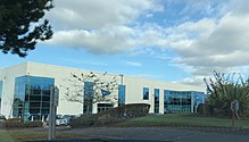
III. Economy
Average Salary in Kilmarnock, Scotland: East Ayrshire £22k
Job
Average
£0
£32k
Customer Service Advisor
£16k
Retail Store Manager
£19k
Customer Service Team Leader
£17k
Operations Manager
£32k
Maintenance Engineer
£28k
Assistant Project Manager, Construction
£19k
Pharmacist
£26k
About Kilmarnock, Scotland: East Ayrshire
The average salary in Kilmarnock, Scotland: East Ayrshire is £22k. Trends in wages decreased by -100.0 percent in Q2 2020. The cost of living in Kilmarnock, Scotland: East Ayrshire is 100 percent higher than the national average. The most popular occupations in Kilmarnock, Scotland: East Ayrshire are Customer Service Advisor, Retail Store Manager, and Customer Service Team Leader which pay between £15k and £39k per year. The most popular employers in Kilmarnock, Scotland: East Ayrshire are Teleperformance, MicroTech, and Serco.
Reference Website:
https://www.payscale.com/research/UK/Location=Kilmarnock-Scotland%3A-East-Ayrshire/Salary
IV. Industrial Characterisitics
Major industries:
Coal
The mining industry in East Ayrshire has a long history and played an important role in the Industrial Revolution. In addition to its industrial production, the coal industry played an important part in the personal development of such famous persons as: Andrew Fisher, Prime Minister of Australia in the early years of this century Keir Hardie, founder of the British Labour Party Bill Shankly, Liverpool Football Club’s most famous manager
Ironworks and brickworks
Within what is now East Ayrshire there were ironworks at Lugar, Muirkirk, Hurlford (Portland iron works) and Galston (Cessnock iron works). Dunaskin Heritage Centre (now closed) at Waterside near Dalmellington, occupied the site of a 19th century iron and brick works. Many early features remain, and part of this site is now occupied by the Scottish Industrial Railway Centre. Muirkirk also contained an important ironworks, of which little trace now remains.
Textile design
At Darvel, Newmilns and Galston the Victorian industrialist Alexander Morton mechanised the hand weaving industry and introduced the ideas of William Morris. Textile designs produced included some by famous designers of the Arts and Crafts Movement. There is a monument to Morton at the roadside between Darvel and Newmilns.
Lace
In Newmilns and Darvel high quality lace is still produced using Victorian machines, so that Scottish lace from East Ayrshire is a unique product.
Calico printing and shawl making
The almost forgotten industry of calico-printing, and the closely related shawl manufacture, was at one time a major industry in Kilmarnock, though, due to changes in fashion, it had all but died out by the beginning of the 20th century.
Weaving
Historic weavers' cottages accommodate the Cathcartston Visitor Centre at Cathcartston, recreating life in the Ayrshire weaving communities as it was lived about 1840. Fenwick is a charming example of an Ayrshire weaving village, containing many of the typical low-roofed weavers' cottages. Catrine - the Catrine Mill was destroyed by fire but the Voes, a series of ponds where river water was dammed and released to power the great mill wheels, have been renovated.
Hats
Woollen Tam O'Shanter bonnets have been manufactured at Stewarton since the 16th century. The town is still called the "Bonnet Toun".
Major projects and related introductions:
The National Energy Research and Demonstrator (NERD) project
NERD is funded through the Ayrshire Growth Deal with £17 million of funding from the UK Government and £7.5 million from East Ayrshire Council. The project aims to transform energy production, distribution and connections within the Cumnock area and be an exemplar to Scotland and the UK in making the transition to a low carbon society. NERD will:
·develop the energy system of the future
·create a nationally significant and distinctive Centre of Excellence for energy systems research and innovation
·support the development and delivery of innovative, highly efficient energy generation, storage and distribution systems to create a flexible, locally distribution grid which will help communities to become self-sufficient in energy
·Cumnock will become an exemplar low carbon town and a route map for other locations in Scotland and UK to become self sufficient in energy supplies from local grids
·attract new business and economic activity to the area to achieve inclusive growth for the region
·enable Scotland to become a pioneer in renewable energy technology and contribute to Scotland becoming a net zero society by 2045 (or before)
Reference Website:
https://www.east-ayrshire.gov.uk/PlanningAndTheEnvironment/RegenerationAndTownCentreManagement/NERD/NERD.aspx
https://www.east-ayrshire.gov.uk/TourismAndVisitorAttractions/LocalHistoryAndHeritage/IndustrialHeritage/Industrialheritage.aspx
V. Attractions
1. Dean Castle Country Park:
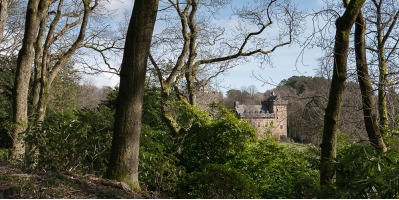
Beautiful woodland walks, adventure playground, urban farm, visitor centre, cafe, shop and a fantastic 14th century castle
2. Dumfries House:
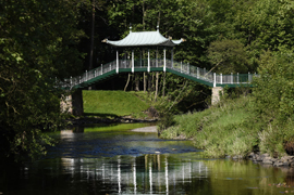
A beautiful stately home designed by the Adam brothers, and one of Scotland's best kept heritage secrets
3. Dick Institute:
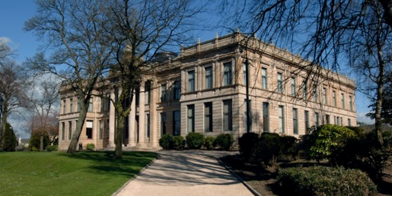
One of the most important cultural venues in the south-west of Scotland, featuring the largest museum and galleries space in Ayrshire as well as East Ayrshire's central library
Reference Website:
https://www.east-ayrshire.gov.uk/TourismAndVisitorAttractions/Attractions/Attractions.aspx
VI. History
The name Kilmarnock comes from the Gaelic cill (cell), and the name of Saint Marnock or Mernoc who is also remembered in the name of Portmarnock in Ireland and Inchmarnock. It may come from the three Gaelic elements mo, 'my', Ernán (name of the saint) and the diminutive ag, giving Church of My Little Ernán. According to tradition, the saint founded a church there in the 7th century. There are 12 Church of Scotland congregations in the town, plus other denominations. In 2005, the Reverend David W. Lacy, minister of the town's Henderson Church, was elected Moderator of the General Assembly of the Church of Scotland.
The core of the early town appears to have lain around what is now the Laigh Kirk, Kilmarnock (Low Church), although the oldest parts of the current building are no earlier than the 17th century, extending north and northwest. In 1668 the town was largely destroyed by an accidental fire. About 120 families lost most of their possessions and were forced to live destitute in the fields surrounding the town. These tradespeople had no other way of making a living and had already been driven to the edge of poverty by having troops stationed with them as part of the anti-Covenanter measures. Parish churches throughout Scotland collected money for the relief of these homeless citizens.
A comparatively modest settlement until the Industrial Revolution, Kilmarnock extended considerably from around 1800 onwards, requiring the opening of King Street, Portland Street, and Wellington Street. Added later was John Finnie Street, which is regarded as "one of the finest Victorian planned streets in Scotland." The Sandbed Street Bridge is the oldest known surviving bridge in the area.
The Titchfield Street drill hall was completed in 1914.
VII. Culture
Early Times
Kilmarnock boasts a large number of listed buildings. The Dick Institute, opened in April 1901, was severely damaged by fire only eight years after it opened. Some of the museums collections were lost in the fire. It reopened two years after the fire in 1911. The Dick Institute was used as an Auxiliary Hospital in 1917 during World War One. It is now shared by the Arts and Museums Service, and the Libraries, Registration and Information Service. The two Art Galleries and three Museum Galleries house permanent and temporary displays of Fine Art, Contemporary Art and Craft, Local and Industrial History and Natural Sciences. The Lending Library, Audio Library, Junior Library, Reference Library, and Learning Centre are all housed on the ground floor.
The first collection of work by Scottish poet Robert Burns, Poems, chiefly in Scots was published here in 1786. It was published at the current site of the Burn's Mall, dedicated to his work. This edition is known as the Kilmarnock Edition or Kilmarnock volume. The ancestors of William Wallace held the Barony of Ricarton, where the suburb of Riccarton is now located, and, according to local tradition, Wallace was born at Ellerslie near Kilmarnock.
John Bowring, polyglot and fourth governor of Hong Kong, was Member of Parliament for Kilmarnock in 1835. In the castle of Kilmarnock, Dean Castle, there is an exhibition of armour and weapons, and the Van Raalte collection of musical instruments.
In popular culture
Kilmarnock was voted the "UK's Friendliest Shopping Town" in 2006. In 2010, BBC Scotland filmed residents on the town's Onthank and Longpark area for the TV program The Scheme which broadcast in 2010 for two episodes so far, out of a planned four. The Scheme caused much controversy within residents of the community, who believed that the BBC only showed the "worst parts", leading to others believing that they were "pretty much the same". The series has been the subject of media criticism, with the series being labelled as "poverty porn" and described as giving a "misleading impression" of life on the estate. The final two episodes of the series were never broadcast due to legal issues. The programme makers denied allegations that their series exploited the residents of the estate.
Scottish singers The Proclaimers titled a song "The Joyful Kilmarnock Blues" on their first album, This Is the Story, released in 1987.
In The Railway Series, Duncan, Engine Number 6 of the Skarloey Railway was built by Andrew Barclay Sons & Co., which is located in Kilmarnock.
The song "The Ballroom Blitz" by the band The Sweet was inspired by an event at the town's Grand Hall music venue, when, in 1973, the band were performing at the venue and were driven off the stage by a barrage of bottles thrown from the crowd. The song went onto achieve worldwide fame and success, reaching the top ten on both the UK Singles Charts and the Billboard Hot 100 singles charts, with many still talking about the concept behind the song.
VIII. Other information
The town is host to Kilmarnock F.C., a member of the Scottish Premiership and the oldest professional football club in Scotland. Their home ground is Rugby Park. The location of the stadium came about by the works of Ross Quigley, whom at the time was one of the first directors of the club. The etymology of the ground is that when founded, the club played both football and rugby. Rugby Park was one of the first football grounds in Scotland to have floodlights installed. In recent years the stadium has been modernised, firstly to bring it in line with the all-seating regulations, then rebuilt totally to make a new ground. It has also hosted international football matches and music concerts, most recently Elton John in June 2005. The club's foundation dates back to the very earliest days of organised football in Scotland, when a group of local cricketers looking for a sporting pursuit to occupy them outwith the cricket season formed a football club in 1869. Originally they played rugby rules, but the difficulty in organising fixtures and the growing influence of Queen's Park soon persuaded them to adopt the association code instead. These origins are reflected to this day by the name of the club's home ground – Rugby Park.
Although not amongst the founder members of the Scottish Football Association in 1873, Kilmarnock F.C. did send a letter of stating their willingness to join and did so in time to compete in the inaugural Scottish Cup tournament in 1873–74. Their 2–0 defeat against Renton in the first round on 18 October 1873 is thought to have been the first match ever played in the competition. Kilmarnock joined the Scottish League in 1895 and after winning consecutive Second Division titles were elected to the top flight for the first time in 1899. The club's greatest success was in 1965 under the management of Willie Waddell. On the final day of the season, they travelled to face Hearts at Tynecastle requiring a victory by two goals to nil (due to the competition being decided by goal average at that period if teams were equal on points) to win the league at their opponents' expense. A 2–0 win saw Kilmarnock crowned Scottish League champions for the first, and to date only, time. This capped a period of strong consistency which had seen them occupy runners-up spot in four of the previous five seasons.
IX. Contact information
Mayor/Officer: Jim Todd
Tel: 01563 576036
Mail: jim.todd@east-ayrshire.gov.uk
Reference Website:
https://www.east-ayrshire.gov.uk/CouncilAndGovernment/About-the-Council/Councillors-and-Provost/YourCouncillor.aspx?25
